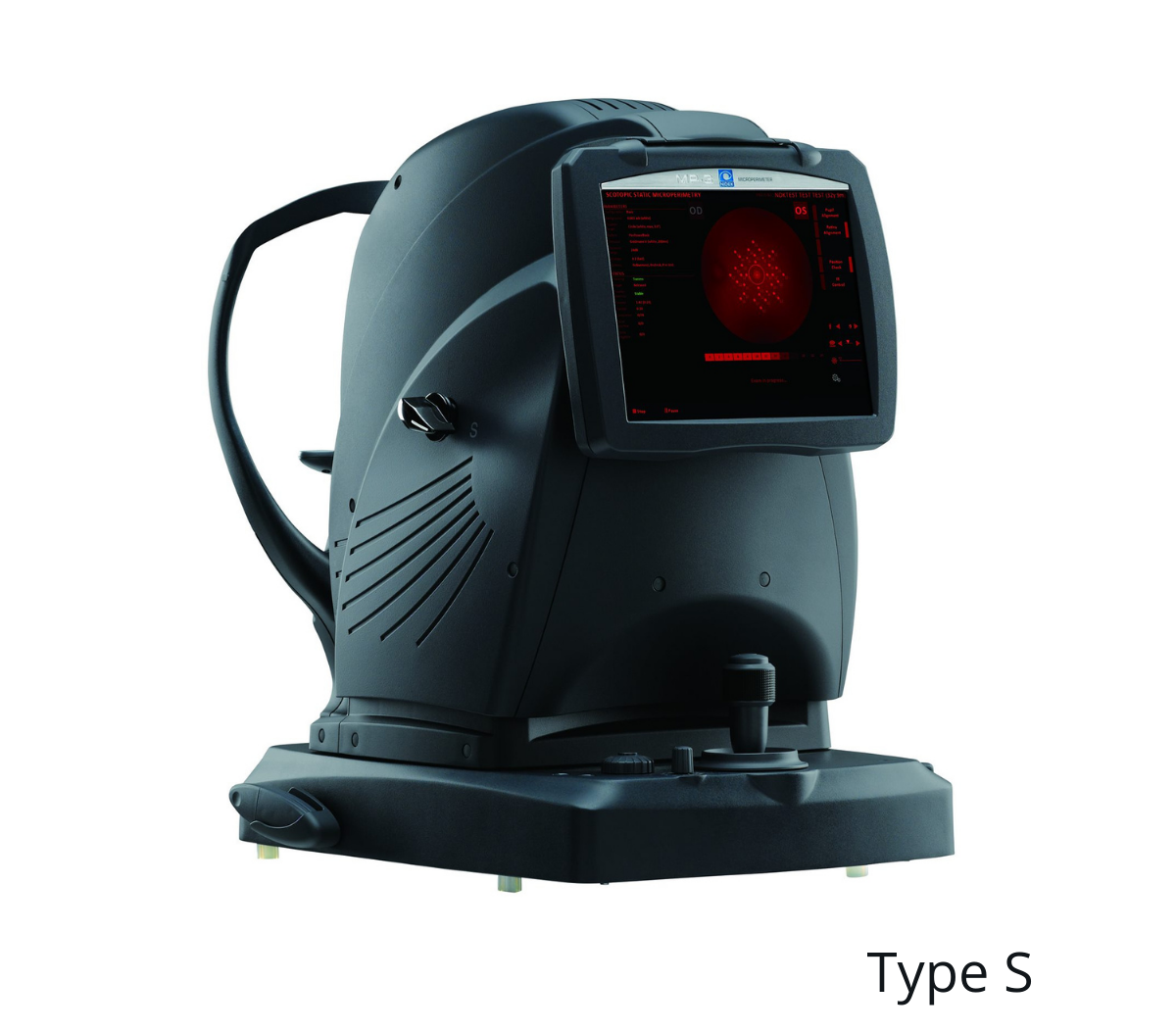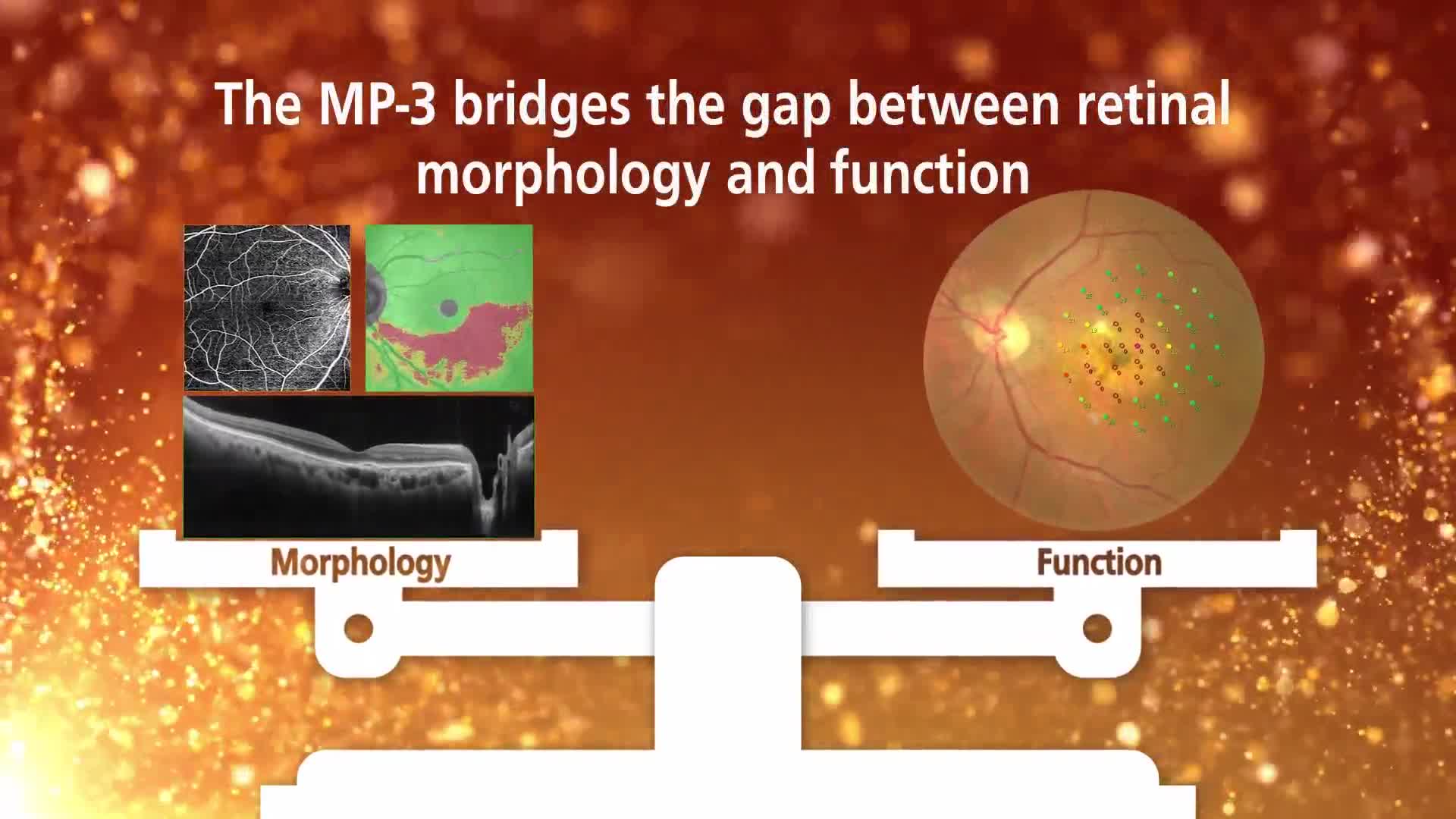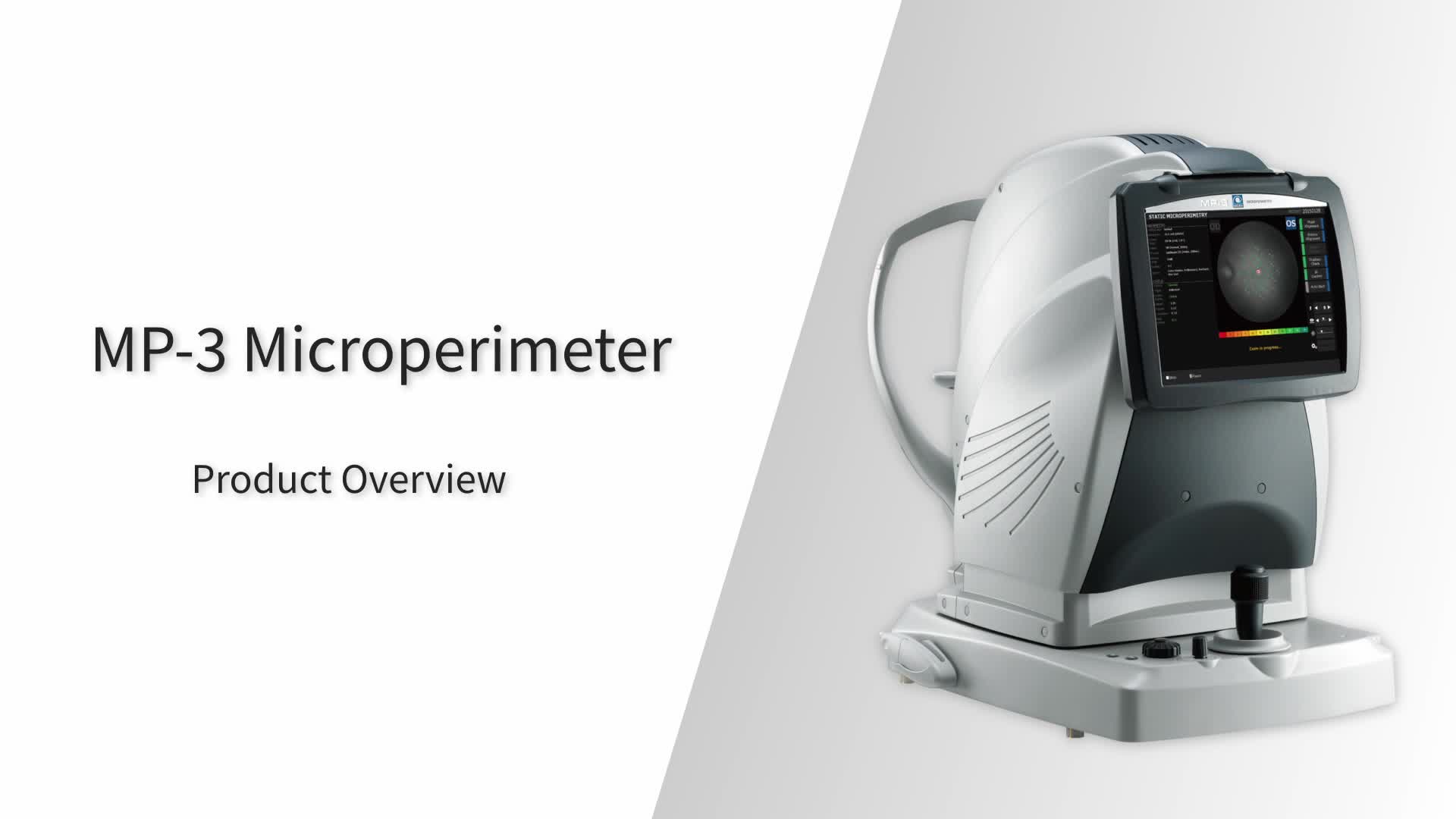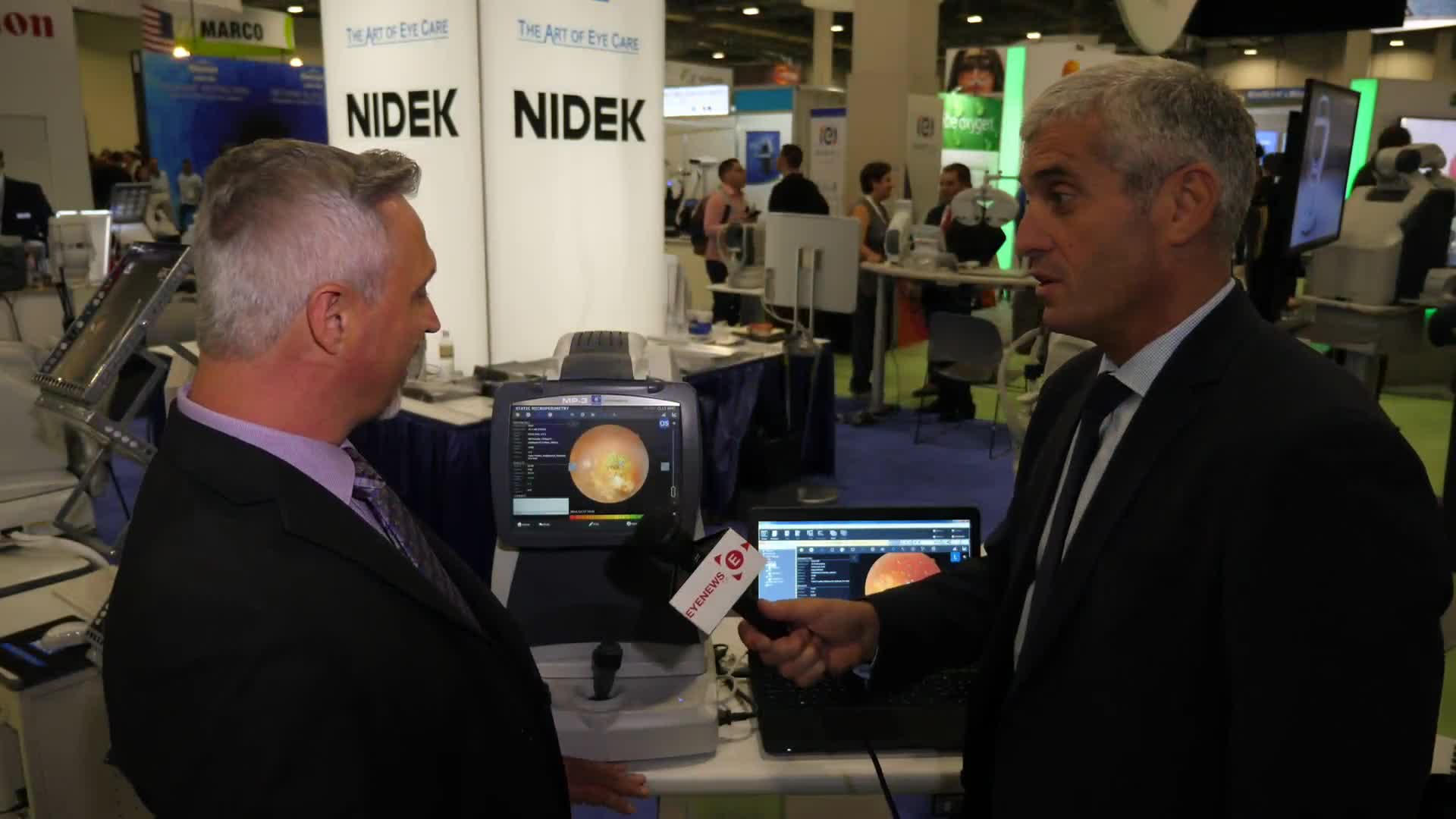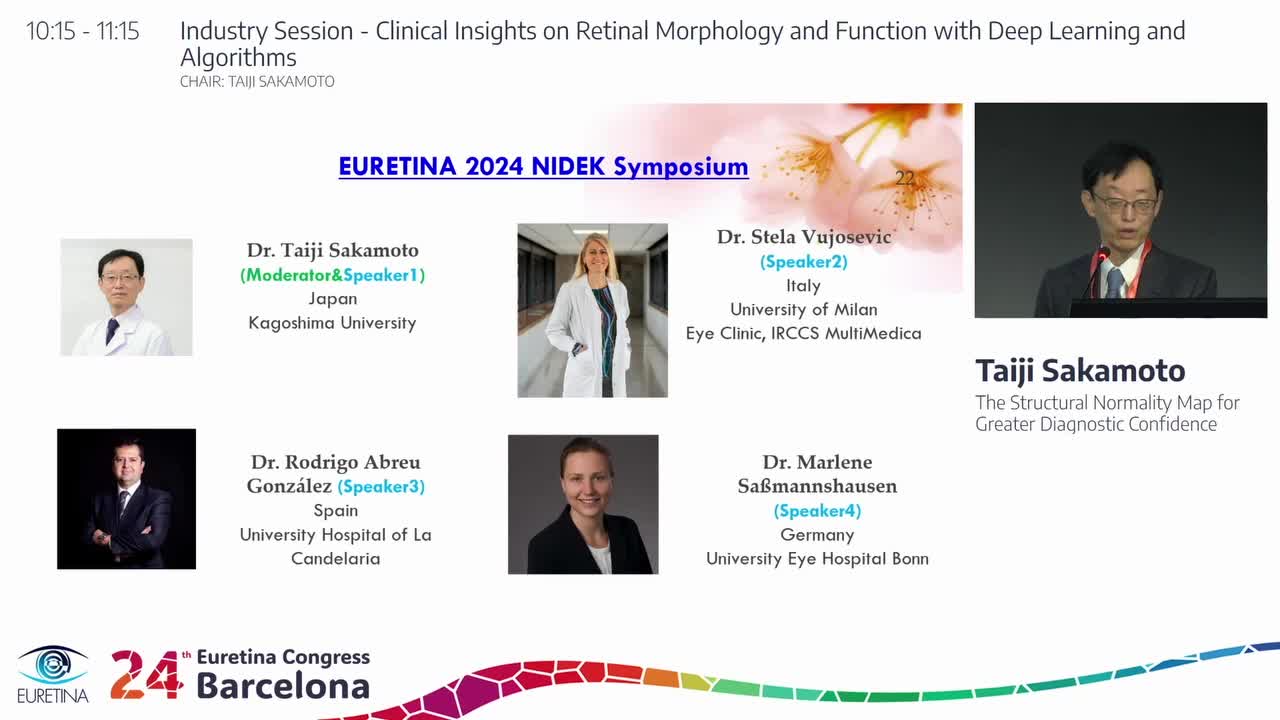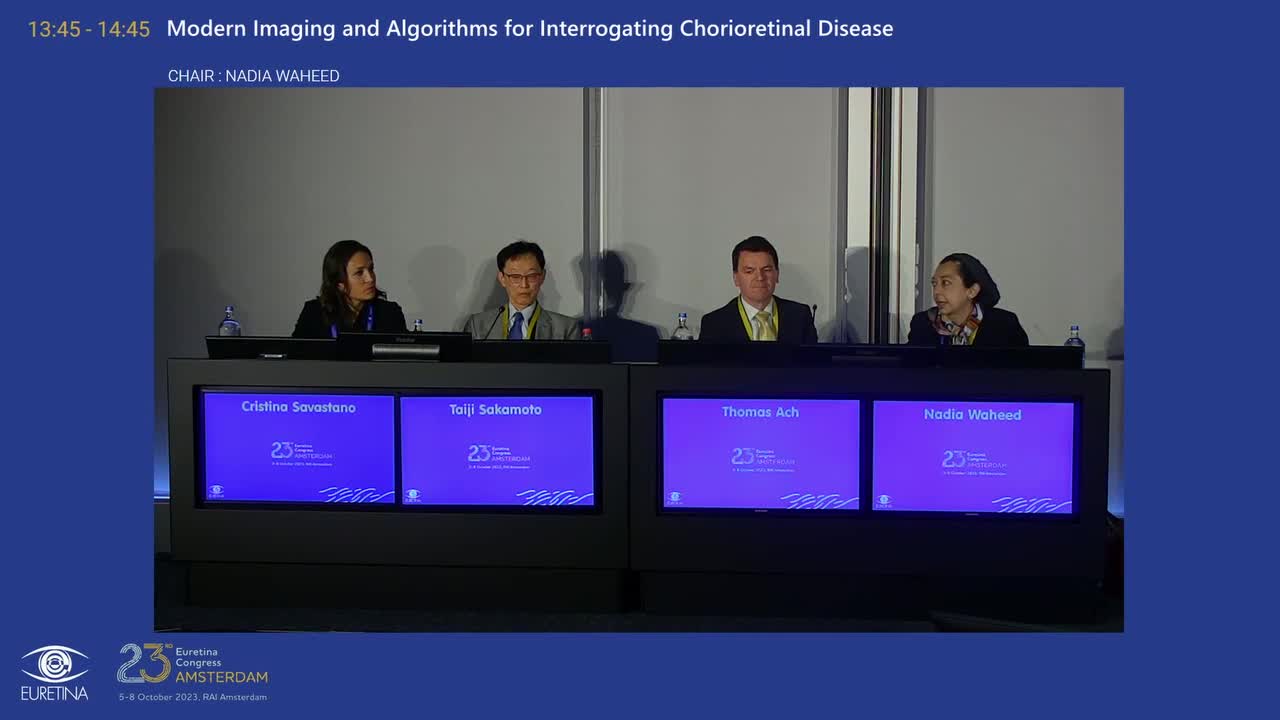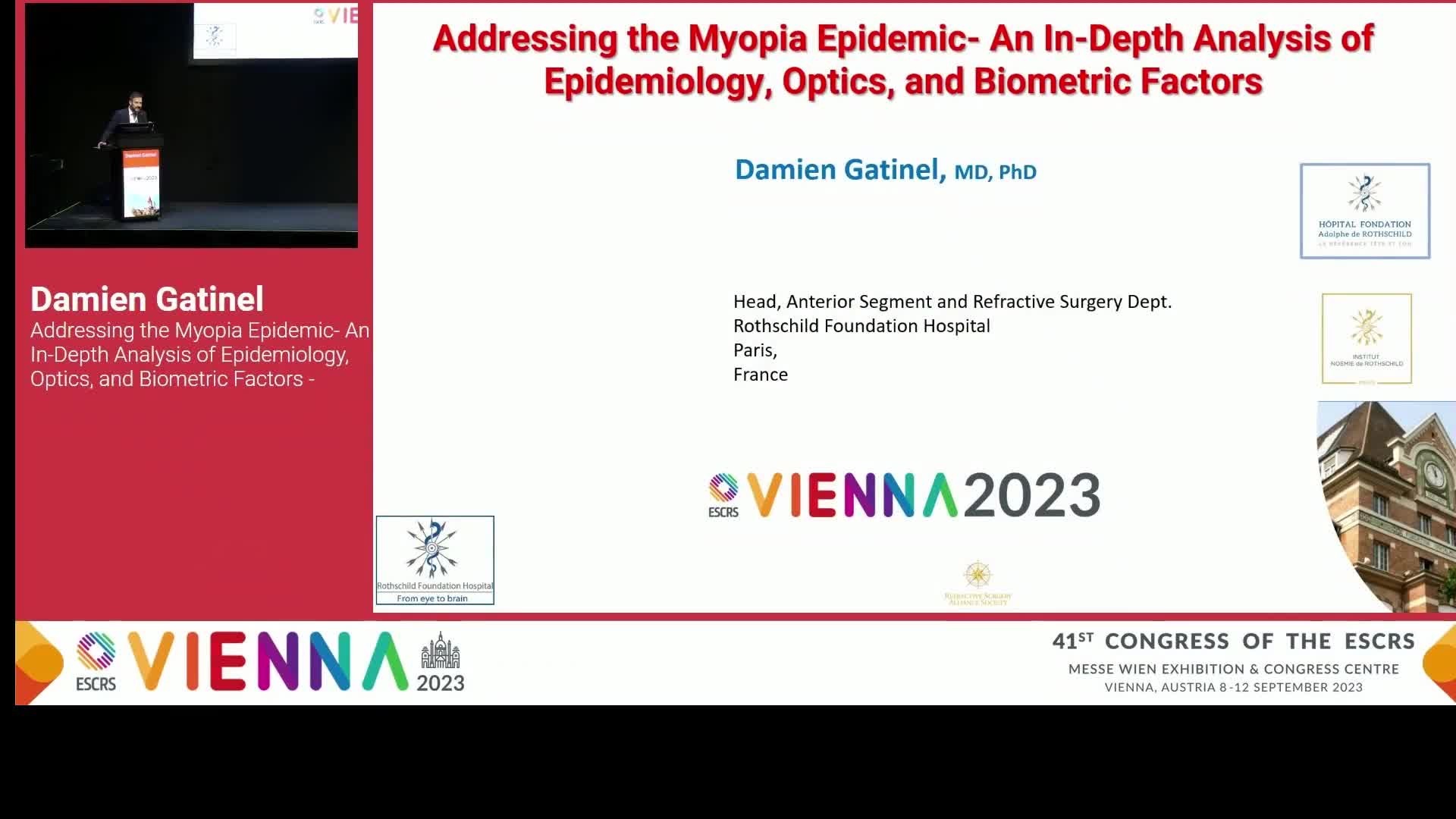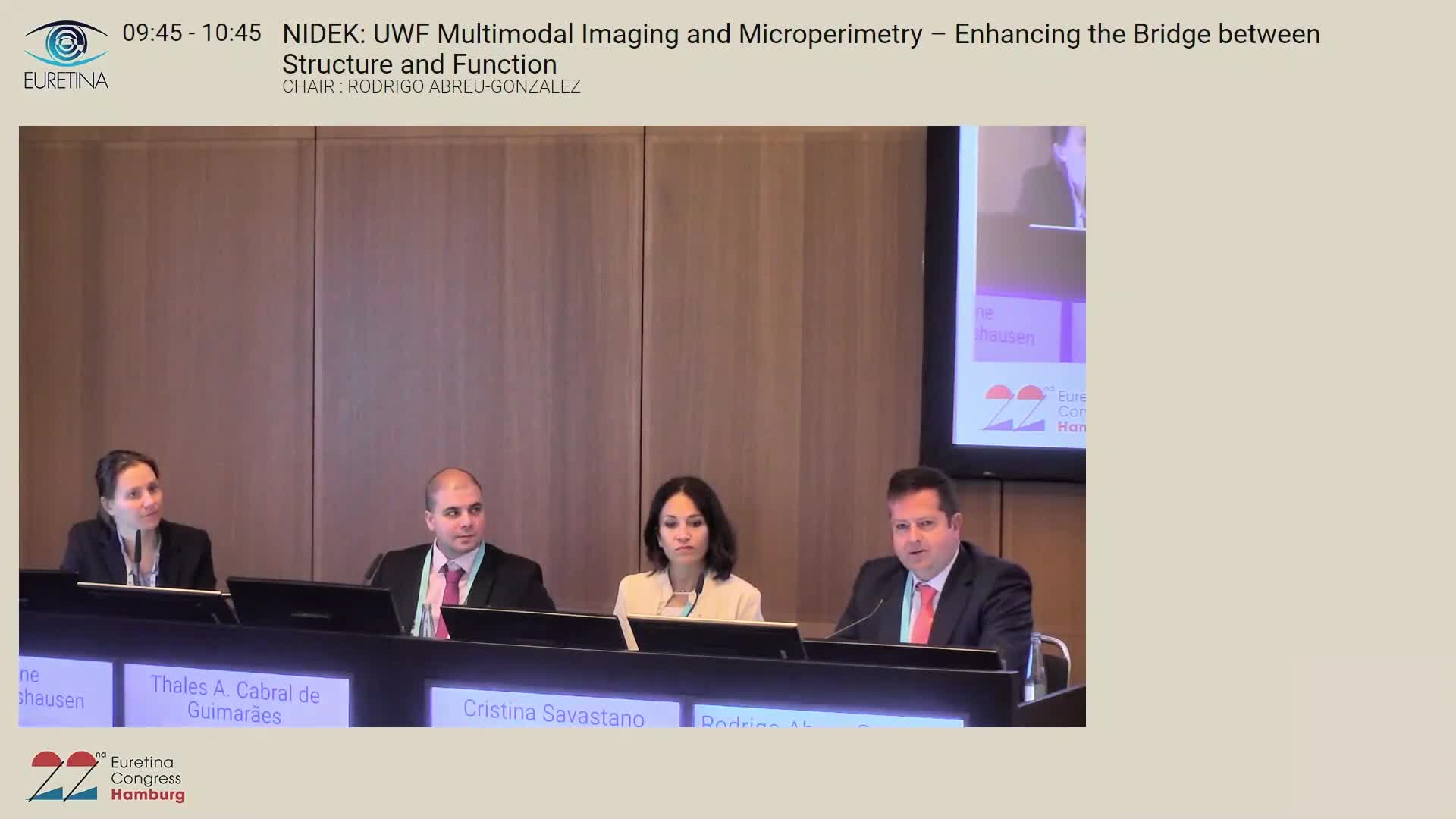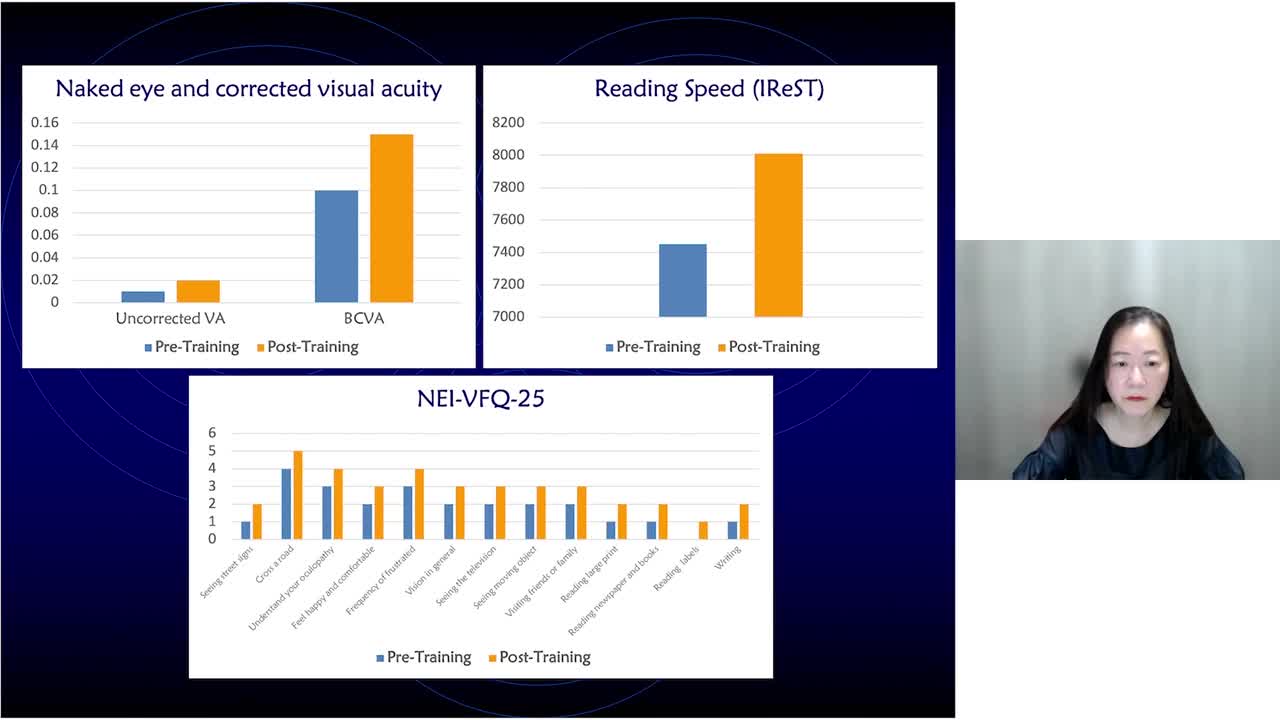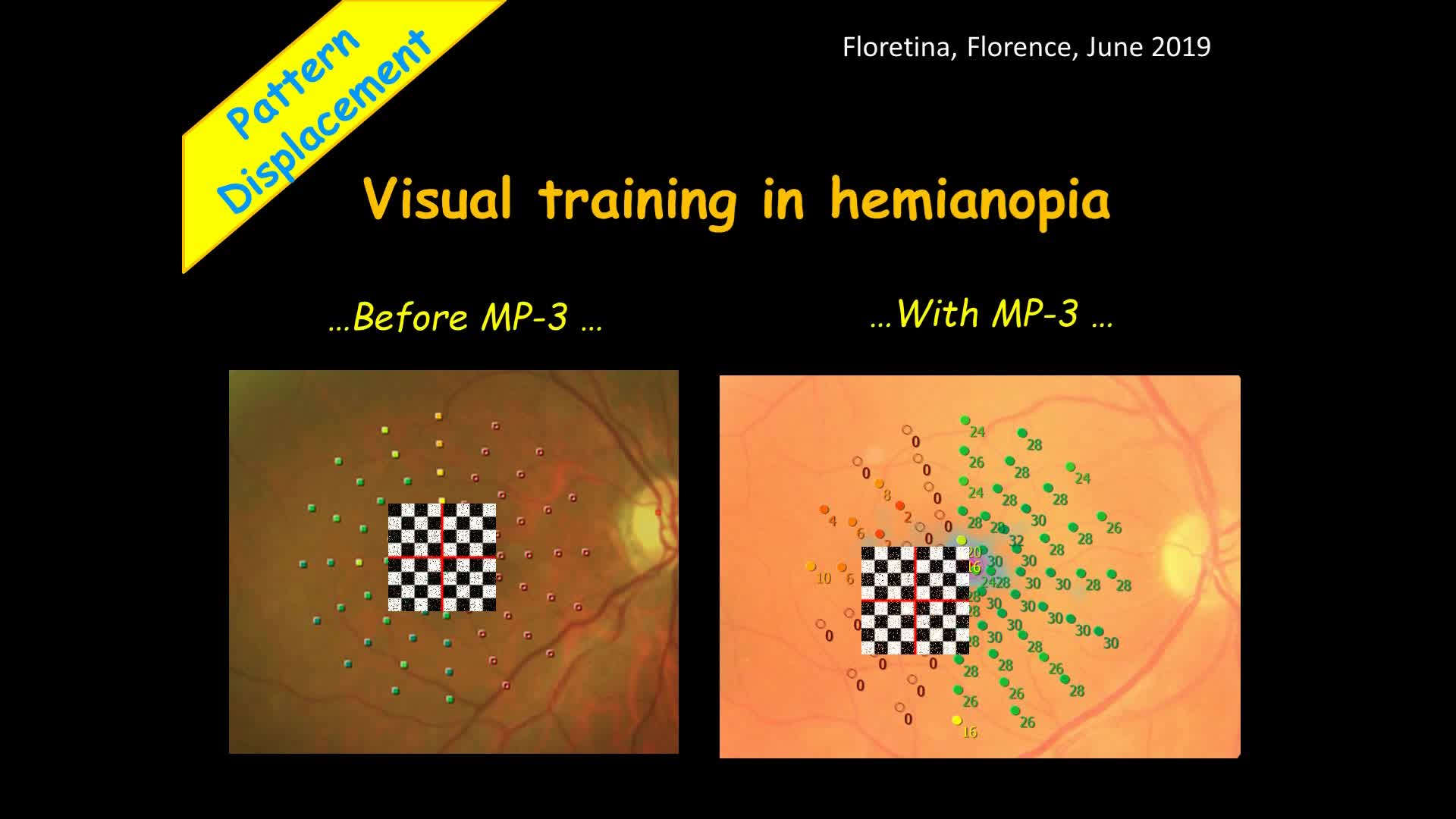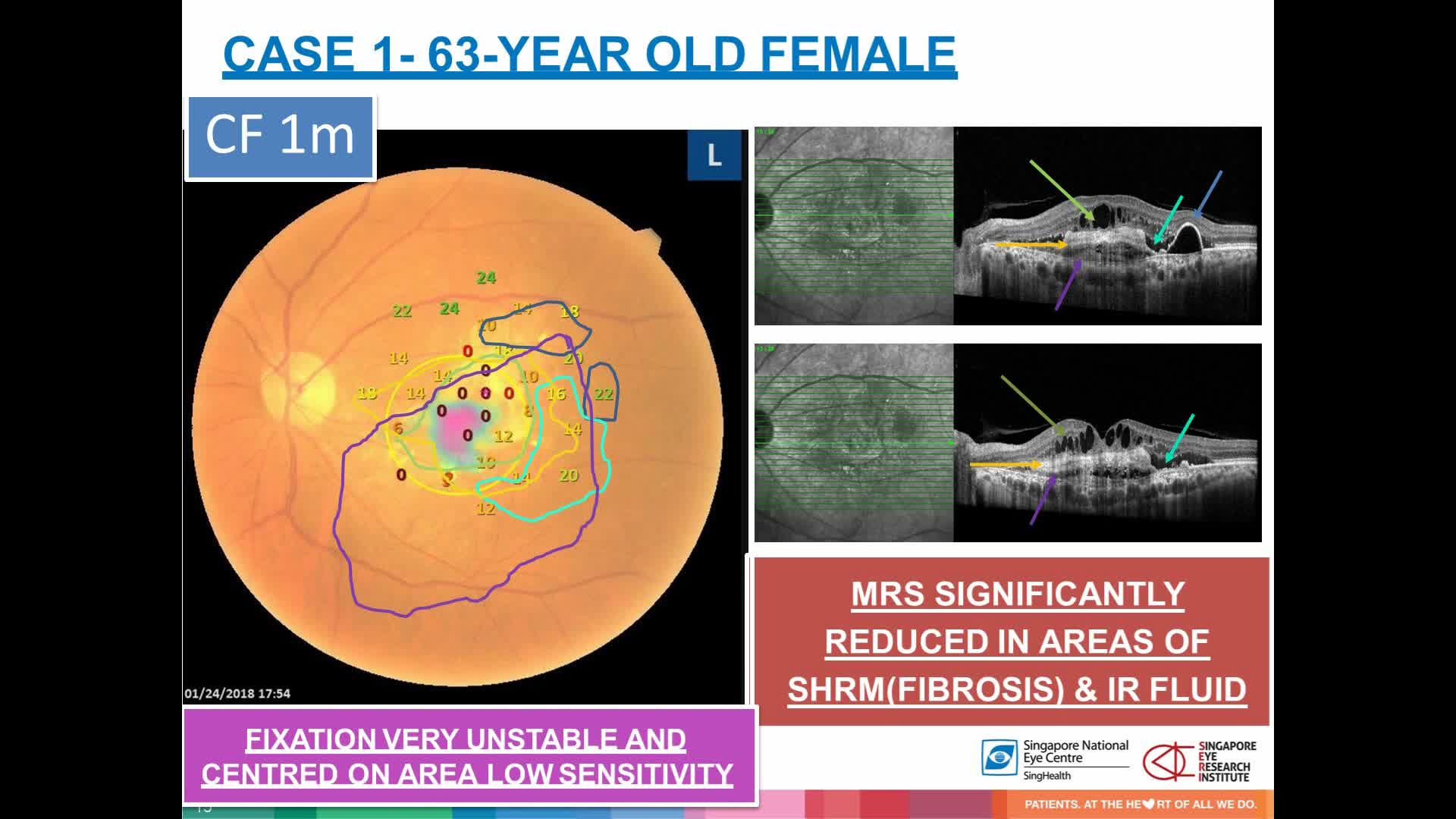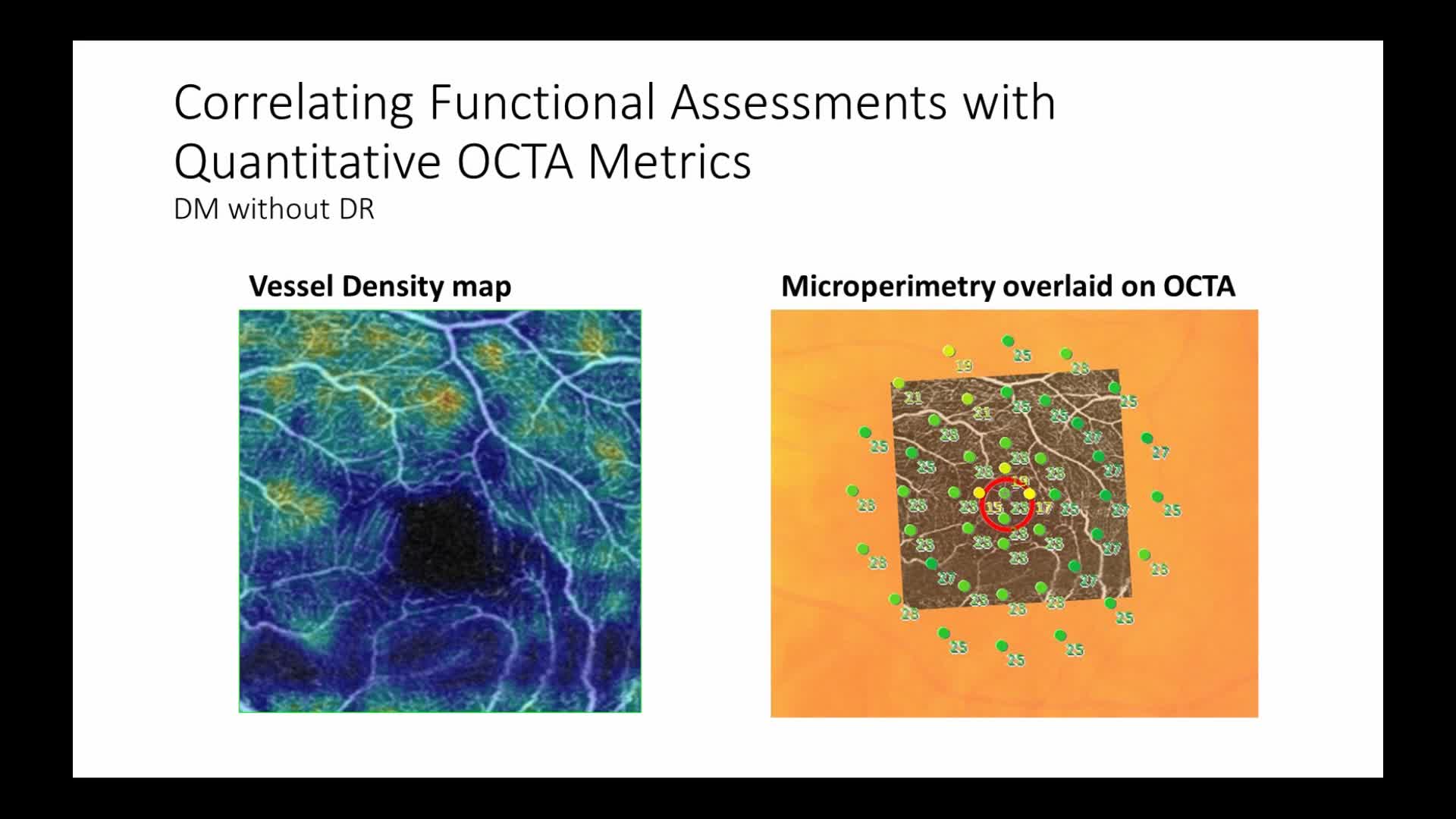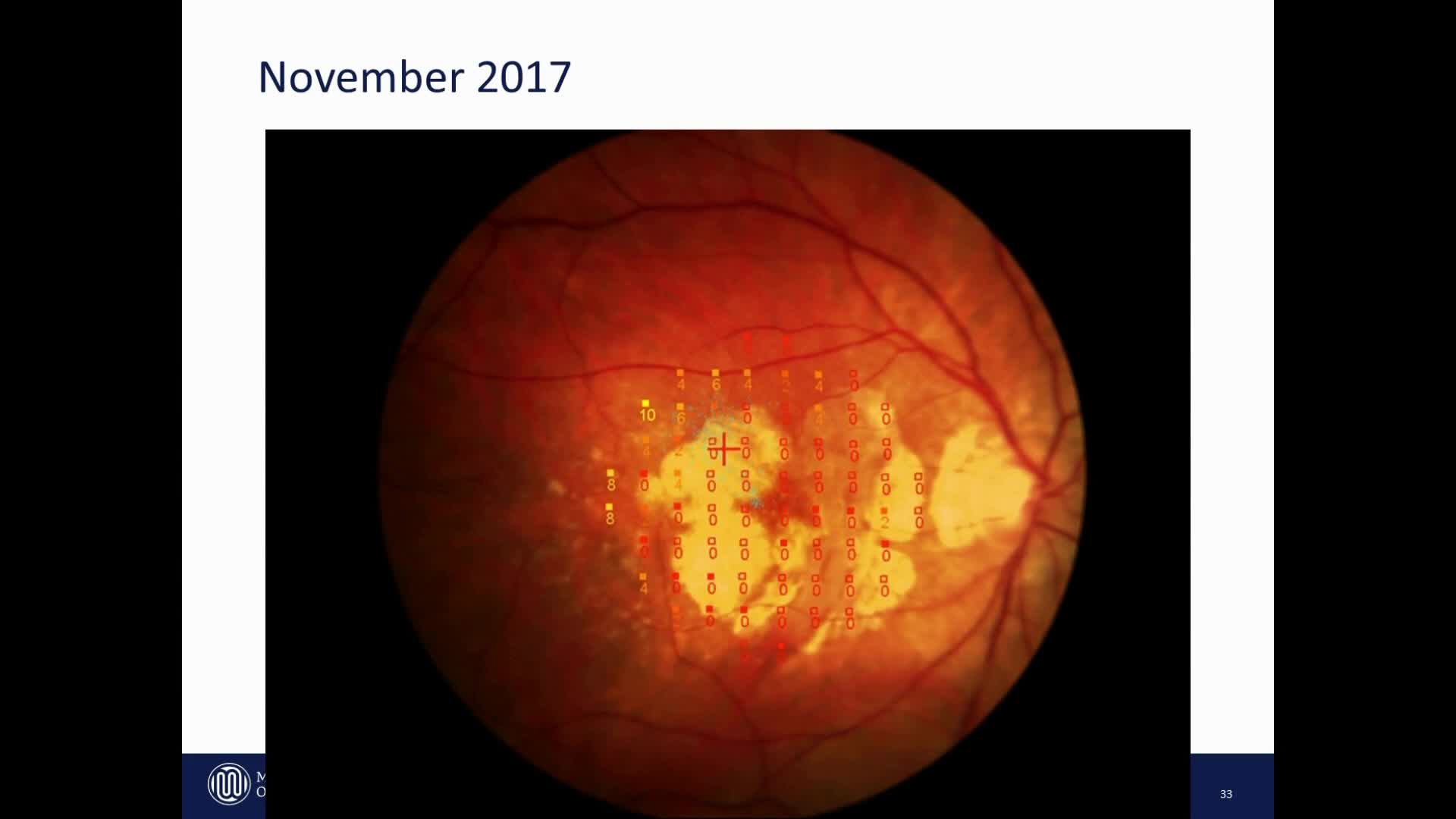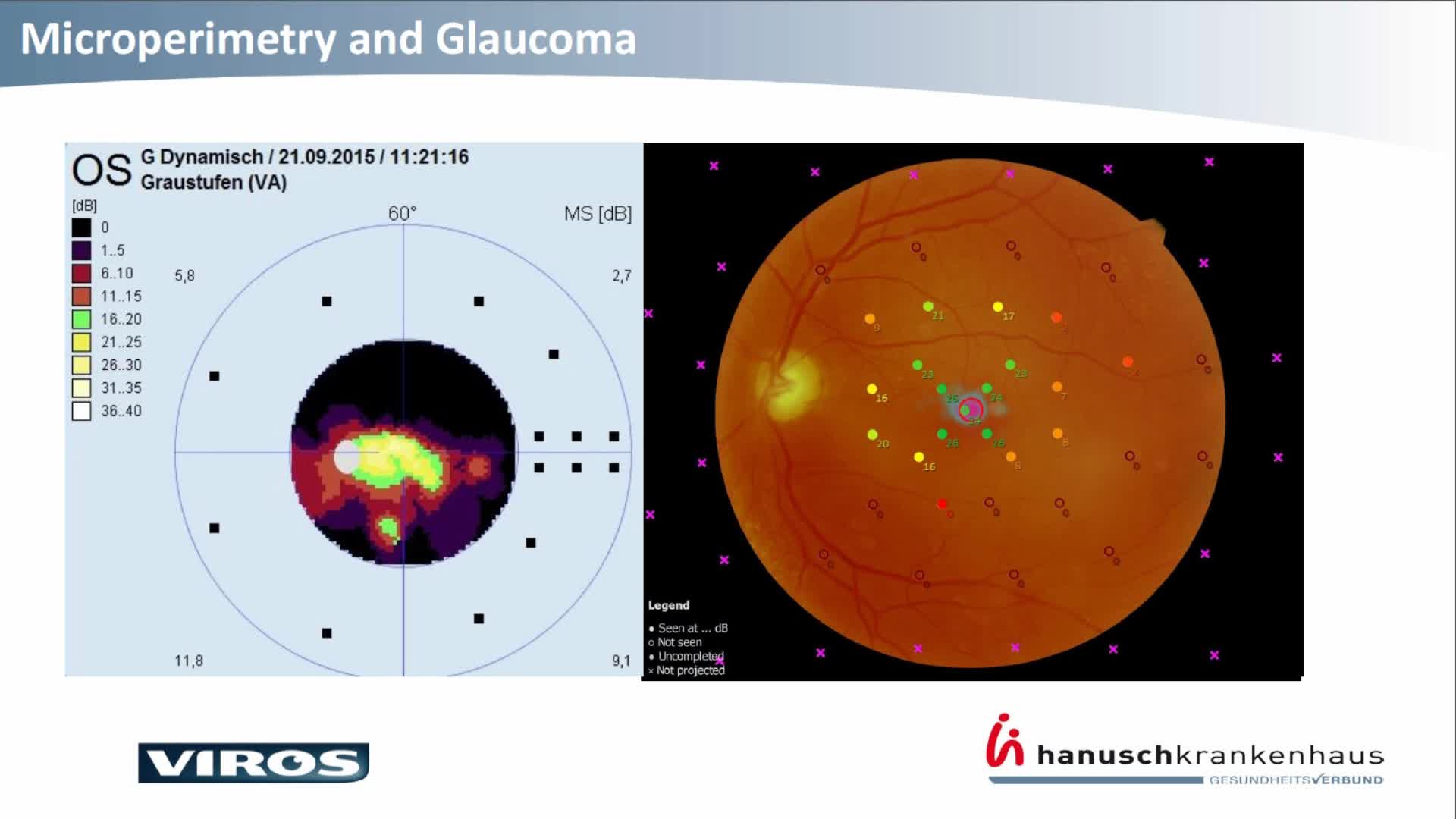
- Microperimetria com uma ampla faixa de medição
- Teste de fixação com um sistema de rastreamento preciso
- Retinógrafo não-midriático de alta resolução
- Exame de feedback para reabilitação visual
- Microperimetria escotópica
- Rastreamento automático e alinhamento automático
MP-3
O Microperímetro Automático
com Retinógrafo Não Midriático
Houve avanços significativos na avaliação morfologia da retina desde a incorporação da tomografia de coerência óptica (OCT) na prática clínica. Além disso, a microperimetria possui avaliação funcional avançada da retina.
O MP-3 mede a sensibilidade local da retina para avaliação funcional e usa os resultados para fornecer exames de biofeedback para o treinamento de pacientes com baixa visão.

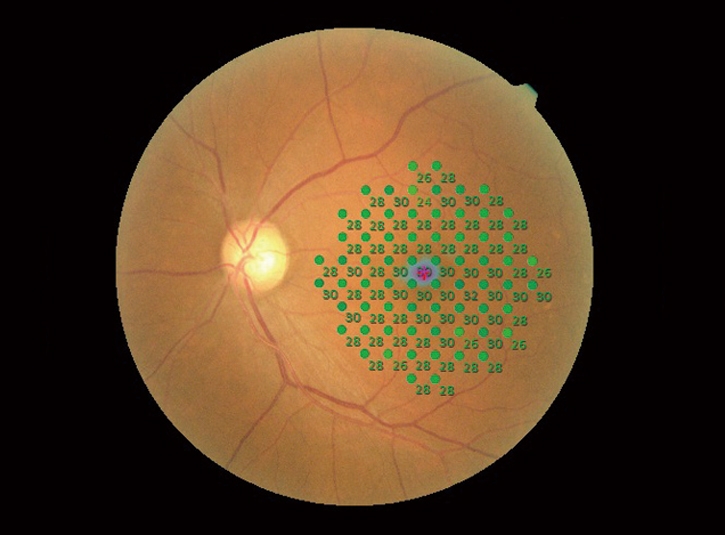
Microperimetria
Ampla faixa de medição
O MP-3 possui uma gama maior de intensidade de estímulo, de 0 a 34 dB, em comparação com o MP-1. O MP-3 mede valores limiares perimétricos, mesmo para olhos normais. Uma luminância máxima de estímulo de 10.000 asb * permite avaliar a baixa sensibilidade.
* De acordo com os métodos de medição da ISO12866
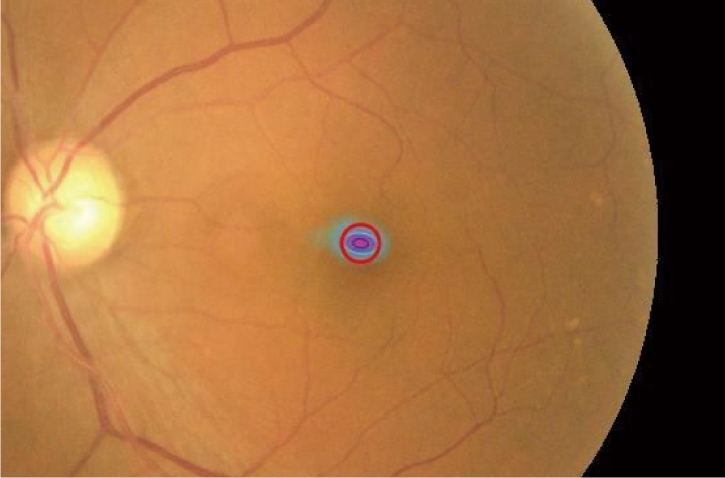
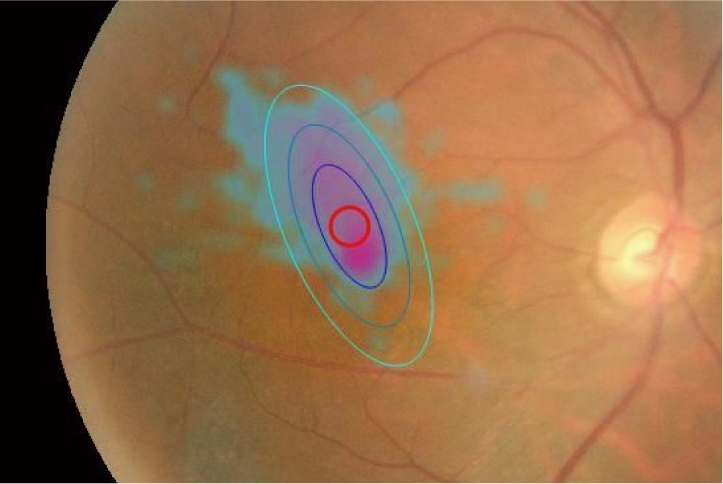
Teste de Fixação
Sistema de rastreamento preciso
O MP-3 pode medir a fixação e determinar o local da retina preferido, simplesmente fazendo com que o paciente olhe fixamente em um alvo. O rastreamento constante do olho durante a microperimetria permite avaliar a fixação em pacientes com defeitos no campo visual central e determina se a fixação melhora após o tratamento.
Retinografia
Retinógrafo não midriático de alta resolução
Uma câmera de fundus de 12 megapixels fácil de usar é incorporada ao MP-3 e adquire imagens de patologia da retina em alta resolução.
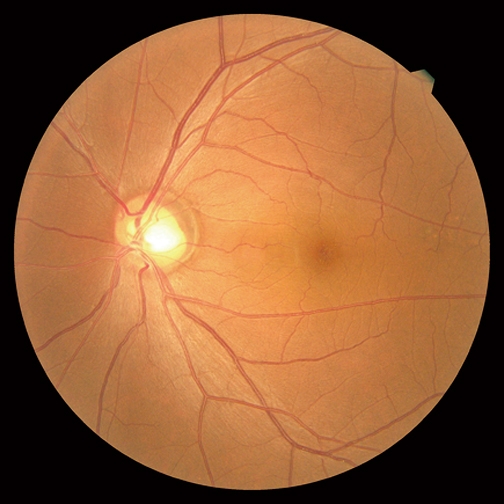
Rastreamento Automático e Alinhamento Automático
As funções de rastreamento automático e alinhamento automático fornecem medições mais precisas, aumentando o conforto e a eficiência do paciente e do operador.
Essas funções permitem acompanhamento fácil e reduzem as variações entre os examinadores, resultando em exames de acompanhamento bem alinhados.
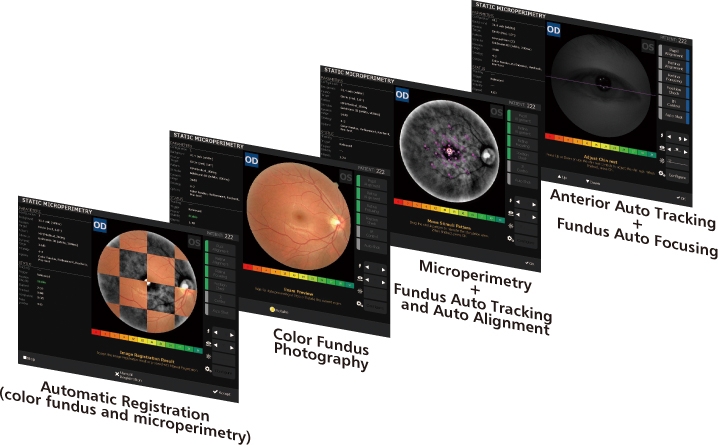
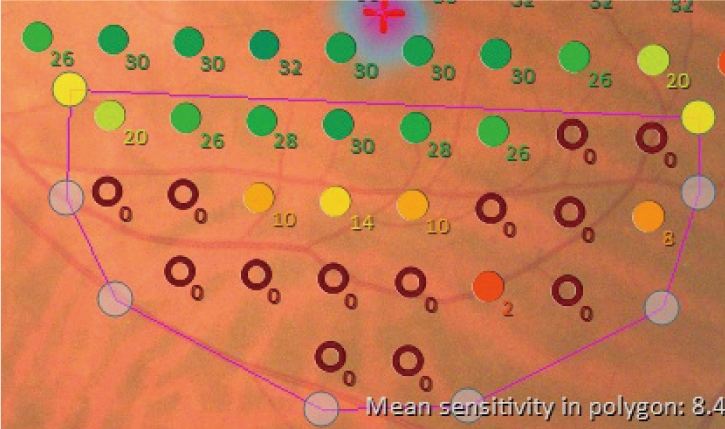
Avaliação do Teste de Região Específica
Após a conclusão das medições, os resultados podem ser avaliados em uma região específica de interesse para permitir uma comparação mais fácil com outras imagens de patologia. Ao especificar a região de interesse, os resultados médios na região são exibidos.
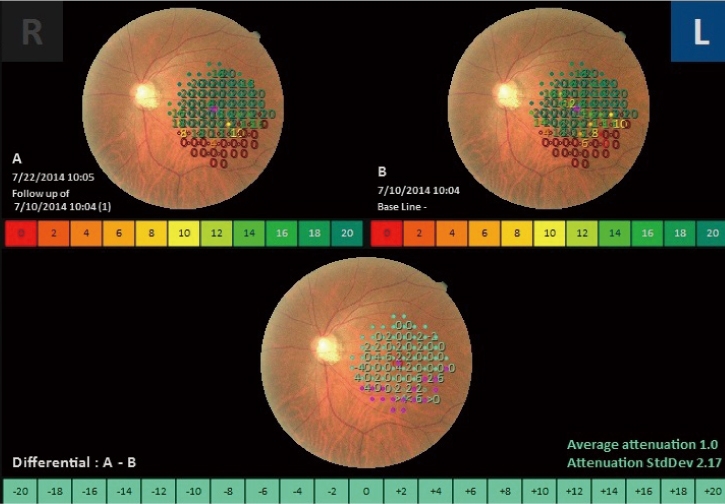
Teste de Acompanhamento
Um teste de acompanhamento pode ser realizado na mesma área usando os mesmos parâmetros de um teste anterior. Esse recurso permite avaliar a progressão da doença ou avaliar os resultados pré e pós-tratamento. Quaisquer diferenças nas duas imagens de microperimetria são exibidas para uma interpretação rápida e intuitiva.
Exame de Feedback
O modo reabilitação visual treina pacientes com baixa visão que perderam a fixação foveal para realocar seu locus retiniano preferido (PRL) para uma região diferente, chamada locus retiniano treinado (TRL). O TRL é pré-determinado por um médico, e a reabilitação da fixação permite ao paciente uma melhor visão funcional (ou seja, velocidade de leitura) devido ao aumento da estabilidade da fixação e aos resultados visuais.
A estimulação ativa do padrão cintilante e a música alegre criam uma experiência de treinamento eficaz e agradável para o paciente.
Imagem cortesia do National Centre of Services and Research for the Prevention of Blindness and Rehabilitation of Visually Impaired – IAPB Italia Onlus, Roma – Itália
Artigo relacionado: Reabilitação visual ativa: Um Novo Paradigma nos Serviços de Baixa Visão. Por Filippo Amore, MD, PhD
https://www.nidek-intl.com/education/case_report/retina/mp3/entry-3612.html
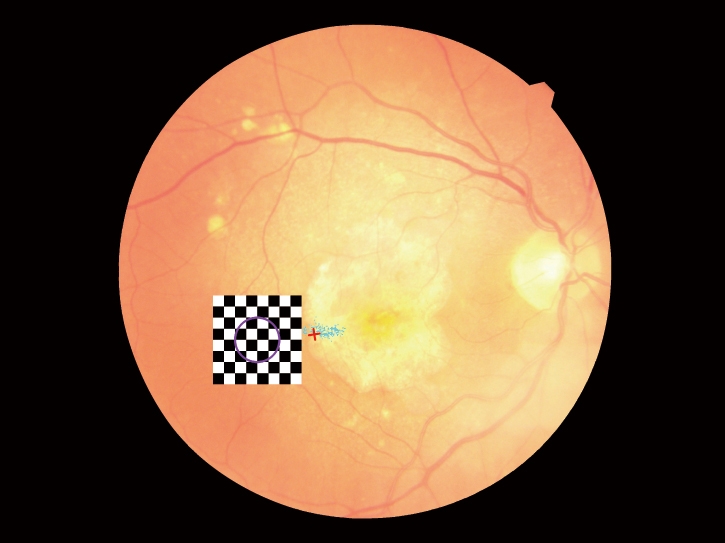
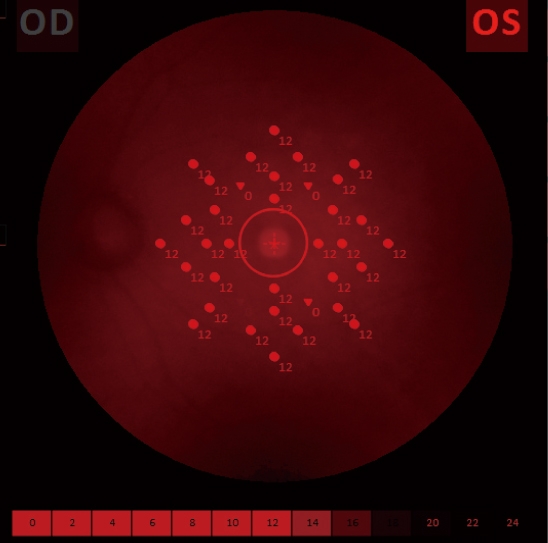
Microperimetria Escotópica
O MP-3 tipo S mede as funções da retina sob condições escotópicas (microperimetria escotópica), além das funções padrões do MP-3.
A microperimetria escotópica é usada para avaliar as alterações na sensibilidade do bastonete de doenças degenerativas da retina, incluindo degeneração macular relacionada à idade e algumas formas de retinite pigmentosa. Essa modalidade pode ser usada em ensaios clínicos de novas terapêuticas para doenças da retina que prejudicam a função do bastonete.
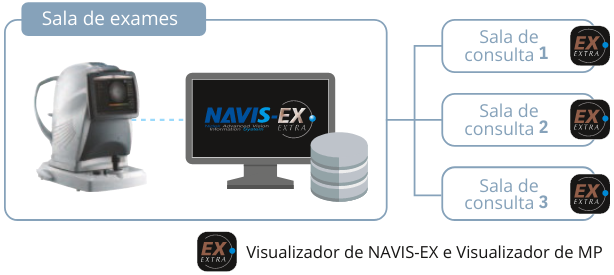
NAVIS-EX
NAVIS-EX é um software de arquivamento de imagem que conecta o MP-3 e outros dispositivos de imagem do fundus da NIDEK.

Configuração de Impressão
Vários relatórios impressos estão disponíveis, incluindo layouts específicos de usuário quando usados com o NAVIS-EX.
Caso de tratamento anti-VEGF para degeneração macular relacionada à idade (DMRI)
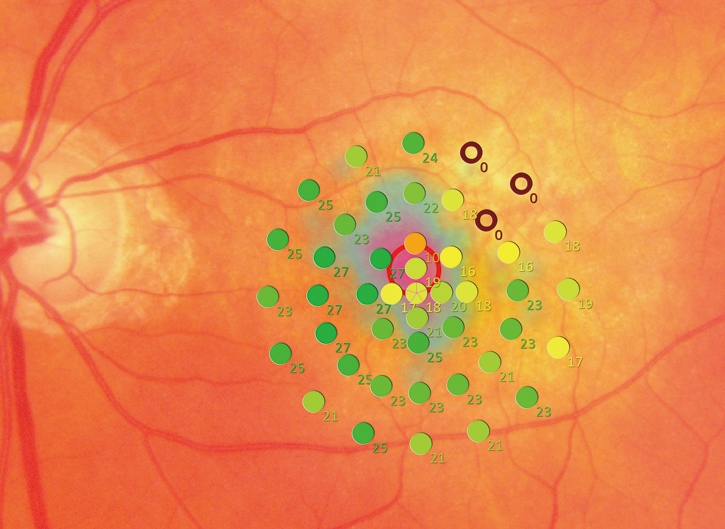
Pré-tratamento
Círculo a 2° Percentagem de pontos de fixação 66,1%
Círculo a 4° Percentagem de pontos de fixação 92,1%
Sensibilidade média: 20,4
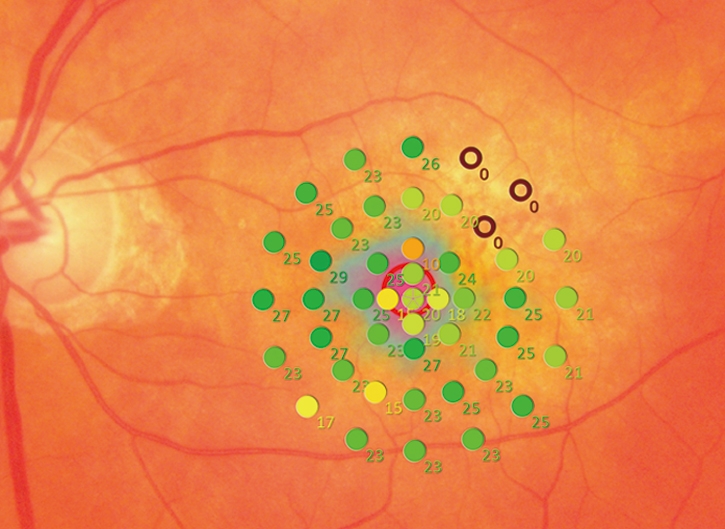
Pós tratamento
Círculo a 2° Percentagem de pontos de fixação 68,1%
Círculo a 4° Percentagem de pontos de fixação 95,5%
Sensibilidade média: 20,9
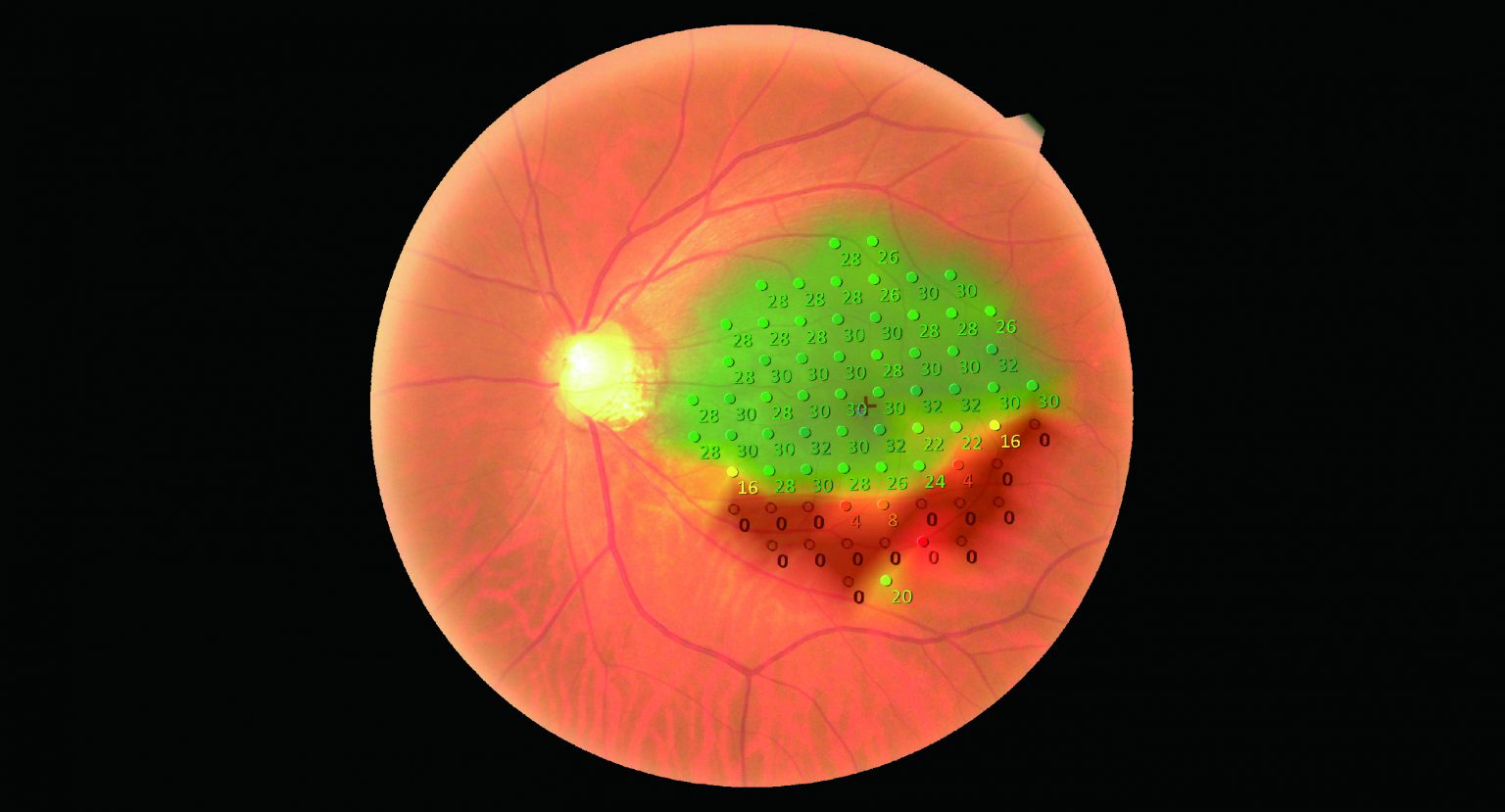
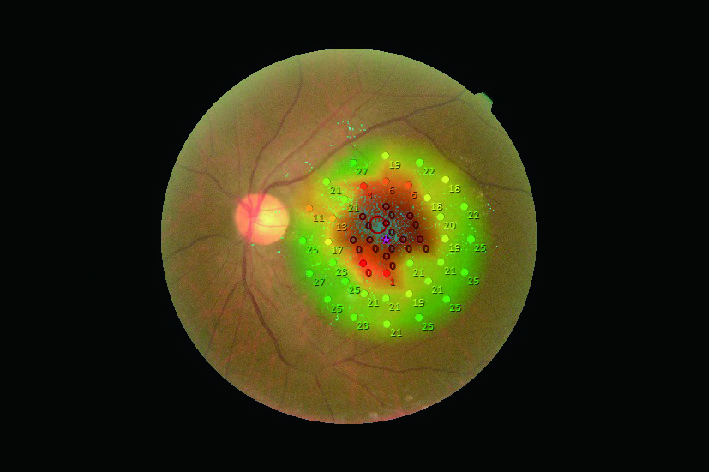
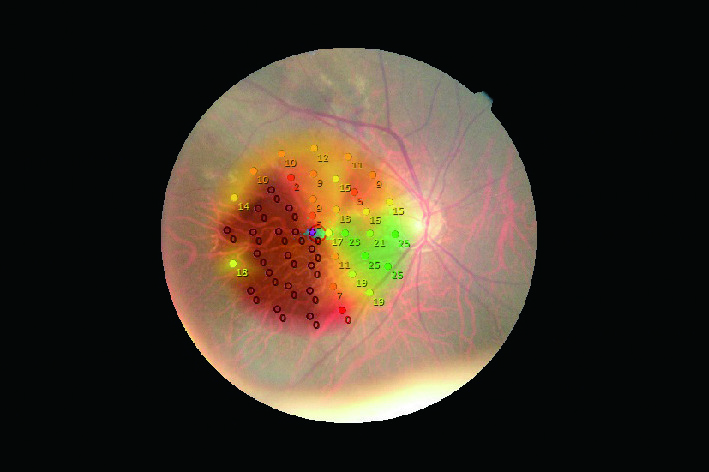

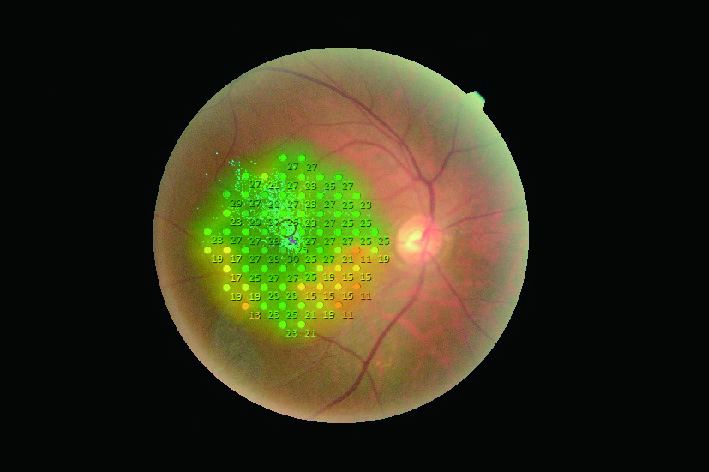
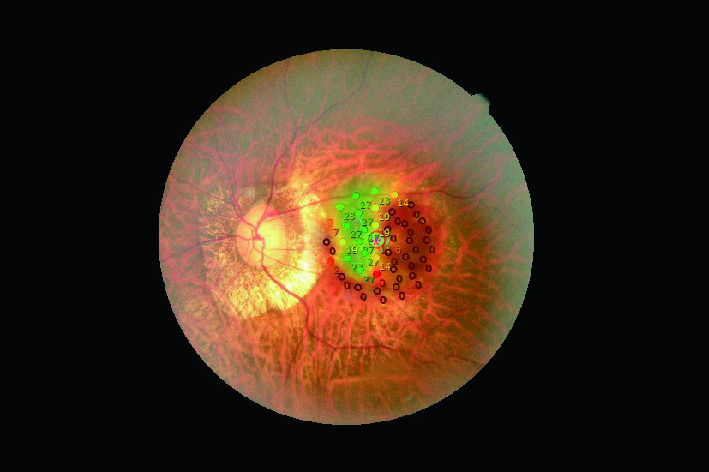
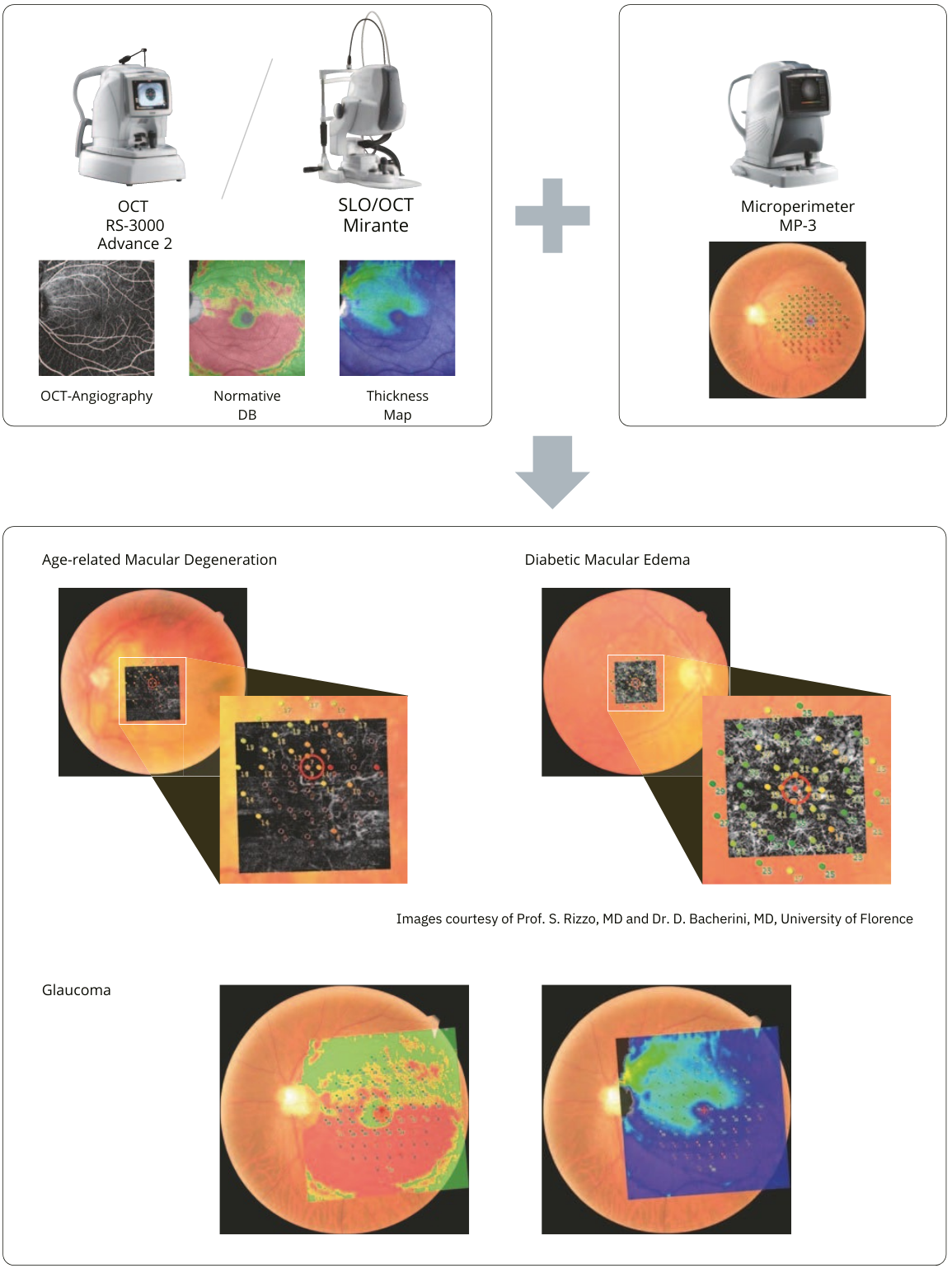
Avalie a estrutura e função da retina simultaneamente usando imagens combinadas de OCT e Microperimetria.
Várias modalidades de OCT capturaras pelo Mirante podem ser registradas com Microperimetria.
Victor H. Gonzalez, MD
Gulf Coast Eye Institute, Valley Retina Institute, USA
Advances in the treatment of macular diseases will require physicians to be able to understand/measure both anatomical and functional bio markers. These measures will enable the physician to identify and follow the progress of treatment in these patients.
Microperimetry with the MP-3 has allowed me to identify patients that have loss of functional bio markers that correlate to anatomical abnormalities. For example, I can correlate loss of retinal sensitivity on Microperimetry with thickening on OCT for DME and document an improvement on retinal sensitivity with improving macular edema on OCT after anti-VEGF treatment. In this case, I treat until OCT CST and Microperimetry stabilizes. I then place the patient on treat and extend regimen until I see worsening of either Microperimetry or OCT thickening. At that point, I will continue treatment at a shorter interval until the retinal thickness normalizes and then I extend to the longest interval between injections that maintains the Microperimetry and OCT stable. A similar approach for the treatment of both dry and wet AMD will be beneficial to the patients.
Rodrigo Abreu Gonzalez, MD, PhD, FEBO
University Hospital of La Candelaria, Spain
In my clinical practice, performing microperimetry is important because it provides added value to the comprehensive evaluation of the patient. Although I don’t perform it on all my patients, when I need a comprehensive and in-depth evaluation of retinal function and structure, this is our best (and only) choice.
A practical example is our use of microperimetry to determine whether disease is active or quiescent in patients undergoing anti-VEGF treatment. Microperimetry provides the extra information that facilitates diagnostic and therapeutic decision-making. The NIDEK MP-3 provides me with ease of use, speed and total customization of the microperimetric test with the ability to integrate the structural tests with the functional outcomes using the NIDEK NAVIS-EX software.
Anna Tan, MBBS, M Med(Ophth), FRCS(Ed), FAMS
Singapore National Eye Centre, Singapore
The NIDEK MP-3 microperimetry allows me to get a detailed analysis of the macular sensitivity that can be matched to the structural imaging on OCT. This allows me to more accurately assess visual function of my patients apart from using visual acuity alone. This added detailed assessment of the macula allows me to track visual function changes in response to treatment even when visual acuity remains unchanged. The macular sensitivity representation on the microperimetry in combination with changes in OCT allows patients to clearly see how their disease is responding to treatment and helps explain to patients and their caregivers the patterns of visual losses that the patients may experience. The addition of the fixation maps allows the appreciation of the patient’s adaptation to their vision loss and is useful to plan visual rehabilitation strategies.
Sadiq N Syed, MD
Maryland Retina, USA
The NIDEK MP-3 Microperimeter has been a valuable tool in showing the patient a functional correlation to their macular condition. I will frequently perform microperimetry for patients with dry age-related macular degeneration, macular pucker, central serous retinopathy, and other macular conditions to assess whether the anatomic findings observed on examination and OCT are causing a functional deficit. In many cases significant drusen will show mild or no decrease in retinal sensitivity which is very reassuring to the patient, or if there is progressive decrease in function then you can help prepare the patient for the possibility of a future decrease in vision. The retinal tracking of this machine allows for pinpoint testing of drusen and mild RPE changes to evaluate if these physical findings are causing a functional deficit. As we are soon to have treatments for dry age-related macular degeneration, the NIDEK MP-3 Microperimeter will become an invaluable tool to show if there is treatment effect that preserves visual function in patients with this condition.
Enzo Maria Vingolo, MD
University Sapienza of Rome “Polo Pontino” Department of Sense Organs, Italy
Most of the clinical applications of Microperimetry are well known and the results supersede the most common functional tests such as Visual Acuity or Visual Field. In my practice, the NIDEK MP-3 is the optimal device for visual rehabilitation. We use this device to understand the functionality of the residual retinal sensitivity, modifications to the cloud of fixation, and to localize the Preferred Retinal Location (PRL) that often occurs after clinical damage.
If the combined outcomes of these tests indicate decreased functional vision, then we can use the Biofeedback training available in MP-3 to change the PRL location.
A Training Retinal Location (TRL) allows better visual performance for reading and common daily tasks.
Additionally, this strategy frequently results in decreasing the magnification power required by the patient, resulting in use of more friendly visual aids.
The latest use of this application is to improve performance among athletes. Training the normal fovea to increase speed of fixation saccades is very useful in sports involving fast moving targets or team players (eg. volleyball, shooting, race-car drivers, etc.).
Thanapong Somkijrungroj, MD
Chief of Uveitis Unit, Retina Unit, King Chulalongkorn Memorial Hospital and University, Thailand
Structural assessment with multimodal imaging is becoming the standard in diagnosis and management of acquired and hereditary retinal diseases. In contrast, visual function is generally evaluated by visual acuity and traditional visual field (VF) tests which have well-documented limitations. This is especially important in patients with retinal pathology and compromised fixation that impacts the reliability of VF testing.
Retinal sensitivity evaluated by microperimetry bridges the gap between functional and structural evaluation in retina diseases. Additional benefits of microperimetry include the identification of the preferred retinal locus (PRL), low vision training and to serve as an outcome measure in clinical trials.
Hence, in addition to structural assessment with multimodal imaging, microperimetry empowers physicians to assess visual function beyond the limits of visual acuity and conventional perimetry.
Laurentino Biccas Neto, MD, PhD
Ocular Vitória, Brazil
Fundus-based perimetry is an essential tool for the comprehensive retinal specialist. It allows an objective assessment of retinal function and a better understanding of macular physiology. This is also very relevant in decision-making, using thresholds for treatment indication, such as early photodynamic therapy for low-sensitivity-central-serous retinopathy, and for determining prognosis during preoperative evaluation.
It may prove to be a very valuable resource in diagnosing poorly visible inflammatory lesions, such as some white dot syndromes, and in following up patients with distorted macular architecture and new-onset complaints, such as macular dragging in FEVR. Assessment of central fixation and biofeedback stimulation is also a new and fascinating utility to be explored in our low vision patients.
Thales A. C. de Guimarães, MD
Moorfields Eye Hospital NHS Foundation Trust, UK
UCL Institute of Ophthalmology, UK
The MP-3 Microperimeter is a versatile and powerful platform to study retinal sensitivity in individuals affected with sight-threatening disorders. More often than not, diseases of the retina display a disconnection between structure and function, which is particularly noticeable in individuals with inherited retinal disorders. I have been impressed with the performance of the MP-3 even under the most difficult circumstances, such as patients with nystagmus and eccentric fixation. With the faster tracking speed coupled with the high-resolution fundus camera, ease-of-use, and the ability to quickly customize each test individually, this microperimeter has been a game changer. It has enhanced my clinical understanding and perspectives of certain retinal diseases, providing new research opportunities – all to benefit patients. In the era of personalized medicine, the MP-3 is a one-of-a-kind tool that allows for more adequate disease prognostication and follow-up.


